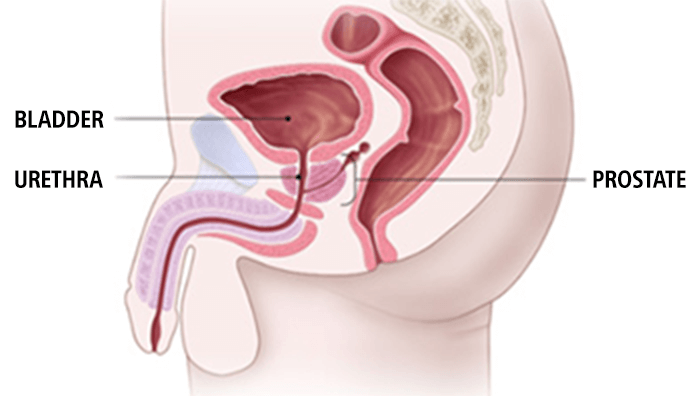Health Essentials
How safe is your workplace?
We all agree that “decent work must be safe” yet many of us have not shown enough commitment; governments, employers and employees all have duties, rights and responsibilities to ensure the highest priority is accorded to the principle of prevention.
Statistics show that where institutions invest in prevention measures over a period of time, a significant decrease in work-related accidents and occupational disease takes place.
This is an opportune time for all workplaces to start the process of ensuring their workplaces are safe and providing the appropriate information that all categories of staff can understand is the best start point.
Guy Ryder ILO Director General could not have put it better when he stated; “to move forward it is necessary to close the data gap, because knowledge is the key to prevention.”
Some areas that require prompt action in most workplaces include:
• Signaling that safety is a priority
o Right from the entrance to the workplace, appropriate notices should show the commitment to safety and health.
• Appropriate markings for walkways
o Vehicles and humans should not compete for the right of way especially in places with trucks etc. there should be clearly demarcated areas for pedestrians.
• Management of extreme temperatures
o In our setting, extreme heat is a major challenge. Workplace design should place emphasis on proper ventilation and in places that are already built, structural changes may be needed in addition to industrial fans and easy access to clean drinking water.
• Fire drills and evacuation plans
o If employees are not aware of what to do in the event of a fire for instance, then it needs to be tackled immediately.
o There should be a plan in place and all team members must know the plan.
• First Aid awareness
o What does one do in the event of an injury or other potentially fatal event occurs? Employees and even employers need to be equipped with basic first aid skills.
• Ergonomics
o Many of the aches and pains we experience are caused by poor posture at work and even beyond. This affects those seated in offices as well as those operating machinery or working on the floors. Correct techniques, taking appropriate breaks and balancing effect on the body should be taught and practiced.
• Use of PPEs
o Many employees have access to these and know its use but still fail to make use of them. Regular knowledge sharing and understanding will eventually bring a positive change.
• Managing Stress
o Stress is a window to many disease conditions and poor performance and it is important all workplaces address this.
o Time management and wellness programmes including exercises help to combat this.
• Avoiding clutter
o When your work area is messy, not only are you at risk of injury, you also feel harassed or stressed out and cause more errors.
• Other Interventions
o I believe workplaces should have happy hours for more interaction (may not need to be physical only), they should also take part in programmes like DUMP where unused or expired medicines are collected safely and the appropriate agency contacted to help dispose off. Harbouring such medications has often resulted in poisoning, addictions etc.
o Once again won’t it be great if your workplace actively encourages “ICE” – IN CASE OF EMERGENCY. Save at least two numbers on your cell phone beginning with ICE e.g. ICE Kojo 090…..when you are not in a position to help yourself, anyone who picks up your phone will be able to contact someone who knows a lot about you.
• Create a Green-Space
o Concrete has taken over most of our living spaces. It is very rewarding to have some plants indoors and outdoors as well as greenery such as a lawn. It doesn’t matter even if it’s a tiny strip. People will gladly take their lunch breaks in “nature” and return to work invigorated.
The list is endless but let us start with the basics and work our way to a safe and healthy work environment with PREVENTION at the fore.
Employers need to be aware that provision of personal protective equipment is not the all in all. PPEs should be seen as the last line of defense for the employee. Prior to using the PPEs the employer must ensure that machines, equipment, processes and the premises are free of risk to the health of all workers.
Employees also play a crucial role and it is expected that they will all actively cooperate with employers in the implementation of the preventive and protective measures.
It is important that workplaces have a visible occupational health and safety specialist or in the absence of one a safety officer who will coordinate all processes such as risk assessment and management, monitoring of working environment and practices that may affect worker’s health, advice on planning and organisation of work, designing and implementation of preventive programmes and even appropriate referrals to healthcare and rehabilitation.
If we made a conscious effort to calculate the money drained off that is related to lost working time, treatment of occupational injuries and diseases, interruptions in production, rehabilitation and compensation, it will leave no doubt in our minds that prevention is a PRIORITY!
AS ALWAYS LAUGH OFTEN, ENSURE HYGIENE, WALK AND PRAY EVERYDAY AND REMEMBER IT’S A PRICELESS GIFT TO KNOW YOUR NUMBERS (blood sugar, blood pressure, blood cholesterol, BMI)
Dr Kojo Cobba Essel
Health Essentials Ltd
dressel@healthessentialsgh.com
*Dr. Essel is a medical doctor with a keen interest in Lifestyle Medicine, He holds an MBA and is an ISSA Specialist in exercise therapy, fitness nutrition and corrective exercise. He is the author of the award-winning book, ‘Unravelling The Essentials of Health & Wealth.’
Thought for the week – “Economic recession or pressure to maximize profits cannot justify cutting corners in workplace safety” – Guy Ryder. ILO Director General. (28th April 2015)
References:
• United Nations Website (un. org)
• International Labour Organization website
- A messy work area puts one at risk of injury
By Dr Kojo Cobba Essel
Health Essentials
The Prostate Has Found Its Voice

The prostate gland, a small but essential organ found only in men, plays a key role in reproductive health. It produces fluid that nourishes, protects, and transports sperm, yet many focus only on its connection to prostate cancer.
Location & Function
- Situated between the bladder and penis, with the rectum behind it.
- The urethra passes through the prostate, carrying urine and semen.
Common Prostate Conditions
1. Prostatitis – Infection of the prostate:
- Symptoms: chills, fever, pus-like urethral discharge, painful urination, groin/testicular pain, painful orgasms, erectile dysfunction.
- Advice: Seek professional help; do not self-medicate.
2. Benign Prostatic Hyperplasia (BPH) – Non-cancerous enlargement of the prostate:
- Symptoms: frequent urination (especially at night), urge incontinence, difficulty starting urination, weak stream, painful urination, blood in urine, terminal dribbling, and in severe cases, inability to urinate.
- BPH can be extremely painful, sometimes compared to labor pains.
3. Prostate Cancer – Common among men, especially black men, often aggressive and with earlier onset:
- Risk Factors: older age, African descent, family history, obesity.
- Symptoms: frequent urination, straining, blood in urine/semen, weak urine flow, new erectile dysfunction; advanced stages may include fatigue, weight loss, and bone pain.
Diagnosis
- Digital rectal examination – checks for irregular or hard areas.
- PSA test, biopsy, ultrasound, CT/MRI/PET scans, bone scan.
Management
- Holistic approaches include watchful waiting, medication, surgery, and radiation (external & brachytherapy).
- Always discuss all options with your healthcare provider.
Risk Reduction Tips
- Regular screening
- Healthy, varied diet rich in fruits and vegetables (carrots, tomatoes, broccoli, kale, cauliflower)
- Maintain a healthy weight
- Exercise at least 5 days a week
Final Advice
- Share this information – the prostate needs support!
- Maintain good hygiene, walk and exercise daily, pray, and know your numbers (blood sugar, blood pressure, cholesterol, BMI).
Thought for the Week:
“There is no magic formula to being happy but making a conscious effort to be happy goes a long way.” – Dr. Kojo Cobba Essel
Dr. Essel invites readers to the La Palm Royal Beach Hotel Wellness Festival on Saturday, November 29, 2025, at 6 a.m., to walk, exercise, network, and share ideas to stay healthy.
Contact: dressel@healthessentialsgh.com
By Dr. Kojo Cobba Essel
Join our WhatsApp Channel now!
https://whatsapp.com/channel/0029VbBElzjInlqHhl1aTU27
Health Essentials
Stop the silent killer: Breaking myths to prevent sudden deaths from high blood pressure

Every week in Ghana, a life is cut short, sometimes in the middle of traffic, sometimes at a desk, sometimes in the quiet of sleep. A father doesn’t come home. A sister doesn’t wake up.
A colleague slumps at work and never gets back up. Families are left asking why and you will hear statements like what happened? Was he sick? I just saw him, he has not shown signs of ailment, what a shock and so on.
Behind many of these sudden tragedies is a quiet, invisible force: high blood pressure, or hypertension. It doesn’t scream for attention. It doesn’t always show symptoms. But it tightens its grip silently on hearts, on brains, on lives.
This is not just a medical issue. It is a human one, it is about behaviour, it is about ignorance and it is about lifestyle. It is the grandmother who never got her blood pressure checked because she felt “fine.”
It is the taxi driver, the statistician, the nurse who ignored his pounding headaches, thinking it was just stress. It is the young lady who was so vibrant at church and no one suspected she could fall and die. Because it shows no symptoms.
The alarming numbers we cannot ignore
The Ghana’s 2023 STEPS Survey on Non-Communicable Diseases conducted by The World Health Organisation, Ghana Health Service and Ghana Statistical Service has revealed findings that should push for action.
According to the report, 21.7 per cent of adults aged 18 to 69 in Ghana are living with high blood pressure. Even more alarming is that 51.1 per cent of those with hypertension are not aware of their condition.
This means that more than half of the people with dangerously high blood pressure are walking around without knowing it until tragedy strikes. That is the real danger of this silent killer.
Literature has shown that hypertension is preventable and manageable. But only if we treat it like the threat, it is. That means regular checkups; that means understanding the risks and that means talking about it openly, urgently, and with compassion.
The deadly power of myths
Why are so many Ghanaians untested or untreated? Is it out of ignorance, or the pervasive myths about hypertension and its treatment?
• Some believe blood pressure medicine “weakens the body” or “shortens life.”
• Some believe blood pressure medicine “weakens the penis and kills sexual drive”
• Others think once you start taking medication, you are “dependent for life.”
• Many say, “I feel fine, so I must be fine.”
These beliefs are not only false, but they are also deadly. The truth, according to the World Health Organisation, is that effective treatment can reduce the risk of stroke by up to 40 per cent and heart attack by 25 per cent. Avoiding treatment does not prevent dependence rather, it accelerates death.
As Dr Patrick Kuma-Aboagye, former Director-General of the Ghana Health Service, has noted, “Hypertension is preventable and treatable, but our biggest battle is misinformation and late detection.”
A national conversation we must have
This is not just a health issue it is a national emergency. Sudden deaths rob families of breadwinners, communities of leaders, and the country of its productivity. In every obituary notice caused by hypertension, there is a story of loss that could have been prevented with a simple blood pressure check and treatment.
Behind every life saved is a moment of awareness, a decision to act, therefore, the media must rise to the challenge.
Radio and television programmes should dedicate regular airtime to demystify hypertension. Newspapers should carry survivor stories, expert interviews, and practical lifestyle advice.
Social media influencers should spread awareness in local languages, reaching young people who assume they are safe.
Public health experts also have a responsibility. Screening must move beyond hospitals into churches, mosques, markets, schools, and workplaces. People should not have to wait for illness to know their BP status.
What we can do together
To stop the silent killer, we need a collective response:
• Check your blood pressure regularly, even if you feel healthy.
• Follow medical advice faithfully if diagnosed because treatment saves lives.
• For healthy lifestyle, eat less salt, reduce alcohol, reduce starchy, fat and oil intake, avoid smoking, and exercise at least 30 minutes daily.
• Encourage one another talk about blood pressure in families, communities, and workplaces.
Conclusion: Silence is killing us
What kills is not just the disease, but the silence, fear, and myths that surround it. The STEPS 2023 report has sounded the alarm: nearly one in five Ghanaian adults has high blood pressure, and more than half don’t even know it.
This is the time for bold conversation, public education, and decisive action. The media, health professionals, policymakers, and ordinary citizens must join forces to expose the myths, spread the facts, and save lives. Let us not wait for another headline.
Let us make blood pressure a national conversation before it becomes a personal tragedy. With awareness, treatment, and collective will, Ghana can stop the silence and stop the sudden deaths from the silent killer.
Written by: Ansah Moses Teye-Akam – Senior Statistician, Sociologist/Scientific Research Organisational Expert.
Email: moses.ansah@ statsghana.gov.gh/ansahmosesteyeakam@ gmail.com.gh Contact: 0244539034 / 0204359034
Join our WhatsApp Channel now!
https://whatsapp.com/channel/0029VbBElzjInlqHhl1aTU27






